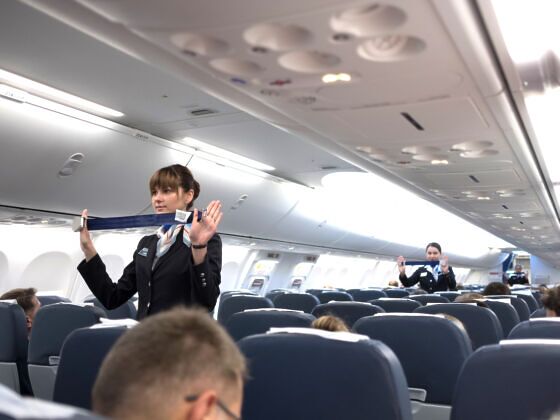There are familiar routines that frequent flyers get used to: The pilot or a flight attendant welcoming you on board, the safety instruction sequence, and the roaring of the jets as you take off from the runway. Anyone who has taken a flight has also probably noticed the occasional “ding dongs” that go off during your flight. These sounds aren’t just arbitrary noises to ignore. They’re actually the language used by airlines to communicate with passengers and other flight attendants.


A Flight Attendant Explains the Sound You Never Want to Hear While Flying
Flight attendant and TikToker tommycimato took to his channel to explain what some of those bells mean. Some of the most common dings you’ll hear on a flight include the singular note that signals a call for a flight attendant to reach a passenger. A high-low chime is a call for the other flight attendants or the flight deck to reach each other. And then there’s the chime that, hopefully, you’ll never have to hear: three high-low chimes, which signals an emergency situation.
@tommycimato #fyp #flightattendant #airline #aviation #travel #explore ♬ Vacation – Dirty Heads
In the past, Qantas Airways explained some of its codes. A second ping after takeoff means the seatbelt sign is off. And a triple low-low chime means the crew should prepare for turbulence. Other codes for various airlines are kept secret for safety reasons. So while those little bells might wake you during your inflight nap, it’s worth it to pay attention, because even codes like these are not always universal.